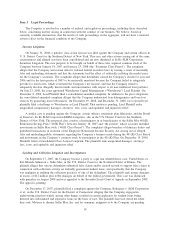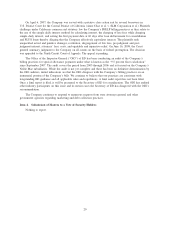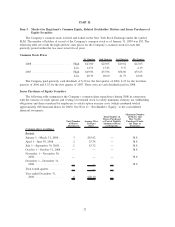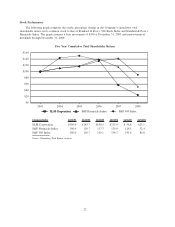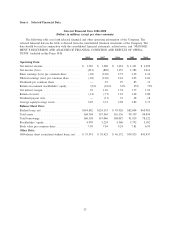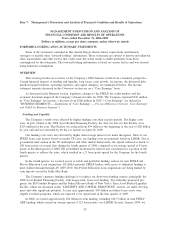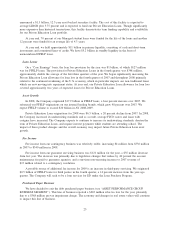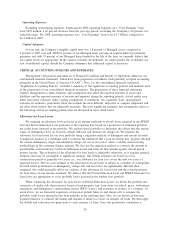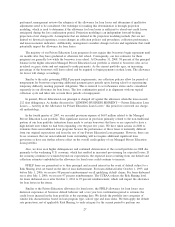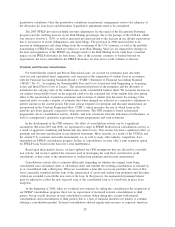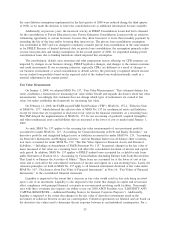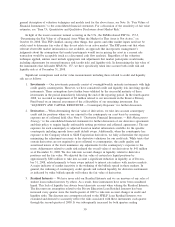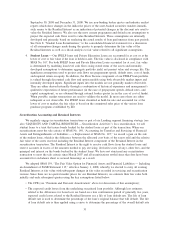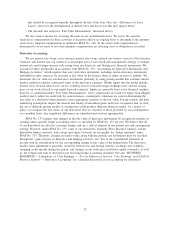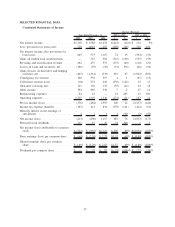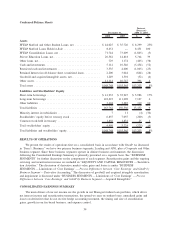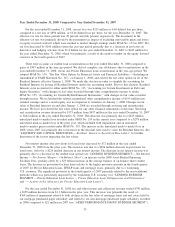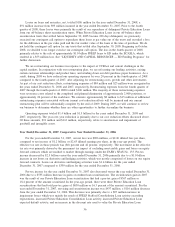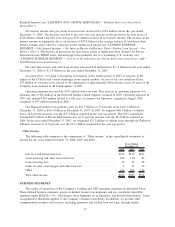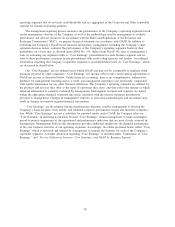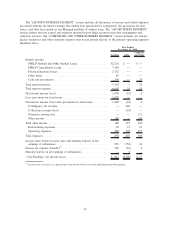Sallie Mae 2008 Annual Report Download - page 30
Download and view the complete annual report
Please find page 30 of the 2008 Sallie Mae annual report below. You can navigate through the pages in the report by either clicking on the pages listed below, or by using the keyword search tool below to find specific information within the annual report.the consolidation assumptions implemented in the first quarter of 2008 were reduced during the third quarter
of 2008, as we made the decision to lower the consolidation rate as additional information became available.
Additionally, in previous years, the increased activity in FFELP Consolidation Loans had led to demand
for the consolidation of Private Education Loans. Private Education Consolidation Loans provide an attractive
refinancing opportunity to certain borrowers because they allow borrowers to lower their monthly payments by
extending the life of the loan and/or lowering their interest rate. The private loan consolidation assumption
was established in 2007 and was changed to explicitly consider private loan consolidation in the same manner
as for FFELP. Because of limited historical data on private loan consolidation, the assumption primarily relies
on near term plan data and timing assumptions. In the second quarter of 2008, we suspended making private
consolidation loans due to funding limitations which impacted this assumption.
The consolidation, default, term extension and other prepayment factors affecting our CPR estimates are
impacted by changes in our business strategy, FFELP legislative changes, and changes to the current economic
and credit environment. If our accounting estimates, especially CPRs, are different as a result of changes to
our business environment or actual consolidation or default activity, the previously recognized interest income
on our student loan portfolio based on the expected yield of the student loan would potentially result in a
material adjustment in the current period.
Fair Value Measurement
On January 1, 2008, we adopted SFAS No. 157, “Fair Value Measurements.” This statement defines fair
value, establishes a framework for measuring fair value within GAAP, and expands disclosures about fair value
measurements. Accordingly, this statement does not change which types of instruments are carried at fair
value, but rather establishes the framework for measuring fair value.
On February 12, 2008, the FASB issued FASB Staff Position (“FSP”) SFAS No. 157-2, “Effective Date
of SFAS No. 157,” which deferred the effective date of SFAS No. 157 for nonfinancial assets and liabilities,
except for items that are recognized or disclosed at fair value in the financial statements on a recurring basis.
This FSP delayed the implementation of SFAS No. 157 for our accounting of goodwill, acquired intangibles,
and other nonfinancial assets and liabilities that are measured at the lower of cost or market until January 1,
2009.
As such, SFAS No. 157 applies to the recurring fair value measurements of our investment portfolio
accounted for under SFAS No. 115, “Accounting for Certain Investments in Debt and Equity Securities;” our
derivative portfolio and designated hedged assets or liabilities accounted for under SFAS No. 133, “Accounting
for Derivative Instruments and Hedging Activities;” and our Residual Interest in off-balance sheet securitiza-
tion trusts accounted for under SFAS No. 159, “The Fair Value Option for Financial Assets and Financial
Liabilities — Including an Amendment of FASB Statement No. 115.” In general, changes in the fair value of
items measured at fair value on a recurring basis will affect the consolidated statement of income and capital
each period. In addition, SFAS No. 157 applies to FFELP student loans accounted for as held-for-sale loans
under Statement of Position 01-6, “Accounting by Certain Entities (Including Entities with Trade Receivables)
That Lend to or Finance the Activities of Others.” These loans are accounted for at the lower of cost or fair
value and as such affect the consolidated statements of income and capital on a non-recurring basis. Lastly, the
valuation principles set forth in SFAS No. 157 apply to all financial instruments disclosed at fair value under
SFAS No. 107, “Disclosures about Fair Value of Financial Instruments” in Note 16, “Fair Values of Financial
Instruments,” to the consolidated financial statements.
Liquidity is impacted to the extent that a decrease in fair value would result in less cash being received
upon a sale of an investment. Liquidity is also impacted to the extent that changes in capital and net income
affect compliance with principal financial covenants in our unsecured revolving credit facilities. Noncompli-
ance with these covenants also impacts our ability to use our 2008 ABCP Facilities (see “LIQUIDITY AND
CAPITAL RESOURCES — Additional Funding Sources for General Corporate Purposes”). Additionally,
liquidity is impacted to the extent that changes in the fair value of derivative instruments result in the
movement of collateral between us and our counterparties. Collateral agreements are bilateral and are based on
the derivative fair values used to determine the net exposure between us and individual counterparties. For a
29


